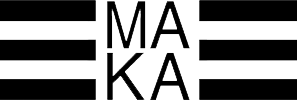If you’re a part of a DTC or lifestyle brand (or any business, for that matter!) you have a lot on your plate. You’re trying to outpace your competitors and grow brand awareness while ultimately bringing in more bottom-line revenue to please your CEO and executive board.
Let’s say your brand awareness is growing and you’re driving strong ROI. But all that said, what should your eCommerce conversion rates be? How do you measure whether that awareness and spend is paying off?
The short answer is this: a strong eCommerce conversion rate (if you’re looking for purchases, not leads or sign-ups) is typically estimated to be about 1.5%, with mobile at 1% and desktop between 1.5% to 2%. This depends largely, though, on the price of your product, stage of brand growth, and quantity of online and offline retailers.
What about paid media conversion rates? We’ve laid out more info below on conversion rates for the two most common types of paid media—paid search and paid social.
Paid Search Conversion Rates
The conversion rate you’ll see for paid search also depends on different factors, like the niche and maturity of your brand and competition in the PPC ad space. For our eCommerce clients, we typically aim for different conversion rates depending on the type of PPC campaign.
“Branded” campaigns, or those focused on keywords that contain the brand name (ex: Patagonia women’s winter jacket), garner the highest conversion rate since these searchers are already familiar with the brand and ready to purchase. This is variable, but conversion rates around 3% - 5% are what we aim for here.
Campaigns that are focused on general or competitive terms (ex: women’s jackets) tend to have a much lower conversion rate, as searchers here are often just researching and not ready to make a purchase, or may ultimately purchase from a competitor. Conversion rates here often fall in the range of 0.5% to 1% for our clients.
Shopping ads also tend to be very competitive, and often include big players like Amazon and Target, and show a lower conversion rate similar to general keywords.
If your brand is influenced by seasonality (ex: you sell swimming suits), there also will be peaks and valleys in conversion rates depending on the season.
Paid Social Conversion Rates
Similar to paid search, we separate paid social (defined here as any ad or post with money behind it) into audiences who are familiar with the brand and those who are not: simply defined, retargeting and prospecting.
Retargeting audiences, who have already engaged with your brand in some way, drive the highest conversion rates. Here we typically aim for a threshold of 2-4% (when based off those who have clicked an ad) though we’ve seen it jump to 20% or higher when advertising a promotion or offering a special incentive of some kind.
Because prospecting audiences have never heard of your brand before, it’s difficult to convince them to convert with a social ad. For this reason we almost always use brand awareness or traffic objectives on our prospecting campaigns, but if we do have an activation event or a highly-qualified audience we’re pushing to purchase, we aim for a conversion rate in the 1% ballpark (and utilize different attribution models!).
To beat a dead horse: these are the conversion rate trends we’ve seen during our 30+ years of combined experience, but averages will always differ depending on your product’s pricepoint, brand maturity, competition and more. Our best advice is to test, test, test, and you’ll begin to get a feel for your averages after a while of building data from your campaigns.
One last note here: if your overall conversion rates are continually less than 0.5% despite paid media efforts, and macro-level trends that affect your business are also on the decline, it may be a sign that you need to pause paid media and focus instead on conversion rate optimizations and search engine optimizations. Check out our blog post on deciding when to put a hold on paid media.
Want us to do an audit of your marketing mix? Schedule a complimentary, sales-pitch-free, 30-minute strategy session with us:
*This blog post was originally posted on Quora by MAKA Digital team members.


